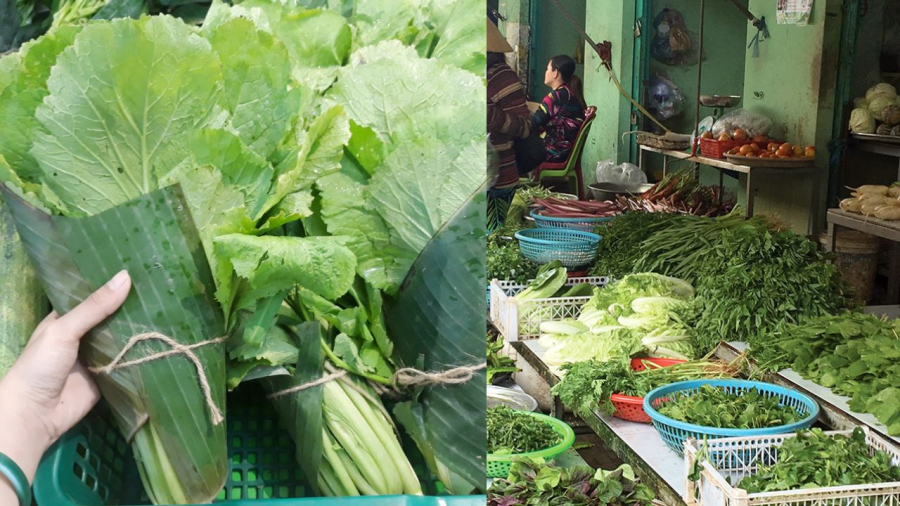Fruits and vegetables are highly perishable foods and are susceptible to rotting when bruised and damp. Once bruised, if exposed to prolonged moisture, they will quickly turn mushy and spoil. This is especially true for leafy vegetables and fruits, where even a small amount of rot can spread rapidly. To prevent this, try the following tips:
Dry your fruits and vegetables
Before storing your produce, shake or pat them dry to remove any excess water, especially rainwater or tap water. During rainy and flooded conditions, the high humidity can accelerate bacterial growth, causing the vegetables to rot faster. Consider using a paper towel to absorb any remaining moisture on the leaves before placing them in a bag and storing them in the refrigerator or at room temperature.

Ensure your produce is dry before storage
Hang them up, avoiding compression
If your refrigerator is full, and you still need to store fruits and vegetables, try hanging them up instead of placing them on the ground or in cramped spaces. By reducing their contact with the floor or other surfaces, you can minimize the chances of moisture accumulation and bacterial infiltration, thus keeping them fresher for longer. Alternatively, while hanging may cause the produce to wilt faster, it prevents bruising and rotting, ensuring they remain edible during times of scarcity.
Wrap them in banana leaves
When running out of refrigerator space, consider wrapping your fruits and vegetables in banana leaves. Banana leaves are a natural and effective way to preserve produce, offering antioxidant and moisture-retaining properties. Ensure your produce is thoroughly dried, then wrap them in banana leaves, adding an extra layer of protection with newspaper if possible.

Banana leaves help keep produce fresh for longer
Avoid piercing or stacking produce
When storing, avoid letting the stems or tips of fruits and vegetables pierce or press against each other, as this can cause bruising and accelerate rotting. Keep them away from hot stoves, as the warmth and moisture can promote spoilage. Instead, opt for a cool, well-ventilated area, with hanging as the preferred method to reduce contact.
For refrigerator storage, use plastic bags, but for room-temperature storage, avoid plastic bags, as they can trap moisture and heat, leading to quicker spoilage.
The Surprising Uses of Banana Leaves: Unveiling the Unknown Benefits
The banana leaf is a versatile tool with a multitude of uses in everyday life, from cooking to food preservation. With its large surface area and natural waterproof qualities, it is an essential accessory in the kitchen. The banana leaf has a long history of being used for wrapping and storing food, and its natural waxy coating helps to keep food fresh and flavorful. It is also a natural and sustainable alternative to single-use plastics, making it an environmentally friendly option for conscious consumers. The versatility of the banana leaf knows no bounds, and it is a true wonder in the world of culinary arts and beyond.
The Humble Dish of Thanh Hoa: A Rustic Delicacy Transformed into an Irresistible Urban Treat
Once a staple food of the people of Thanh, this humble dish has now crossed borders and captured the hearts (and taste buds) of discerning foodies in the city. The unique flavor profile, combined with an intriguing historical narrative, has elevated this simple rural delicacy into a sought-after culinary sensation.




































